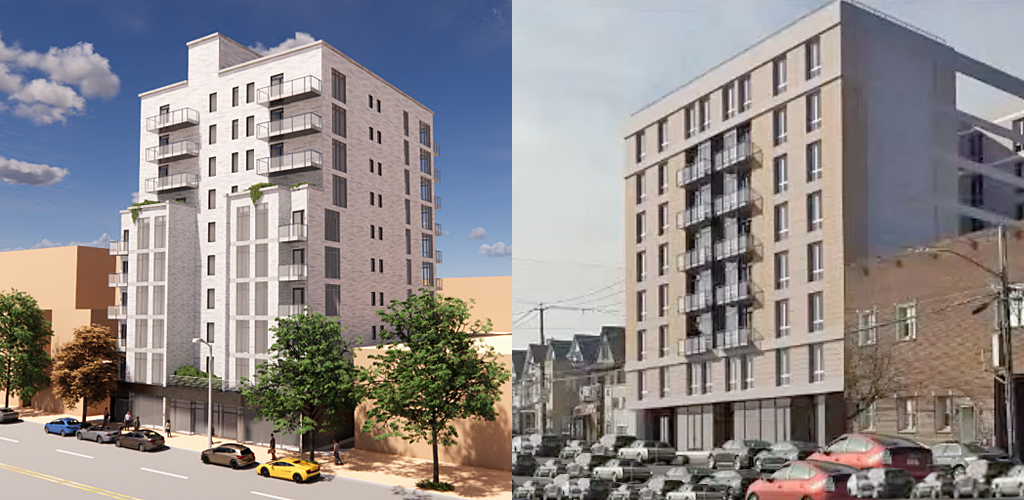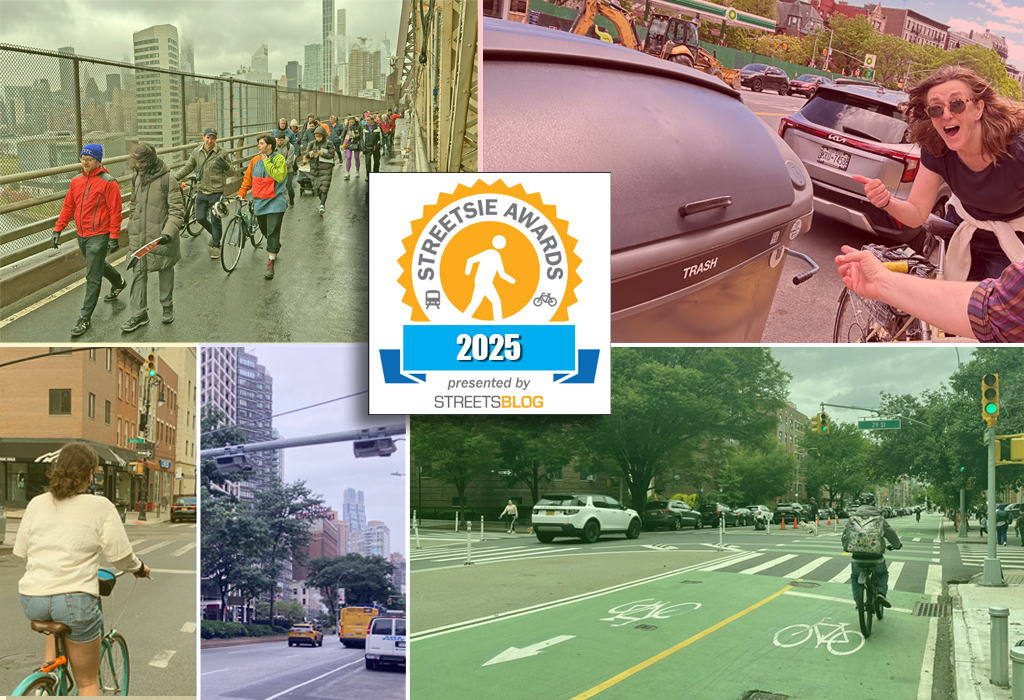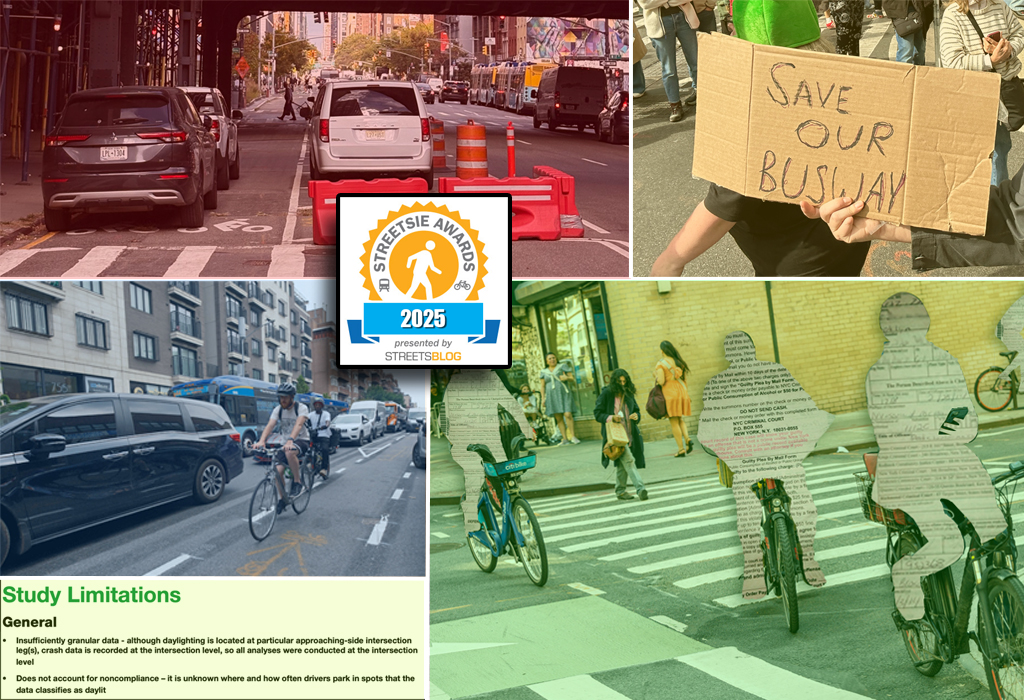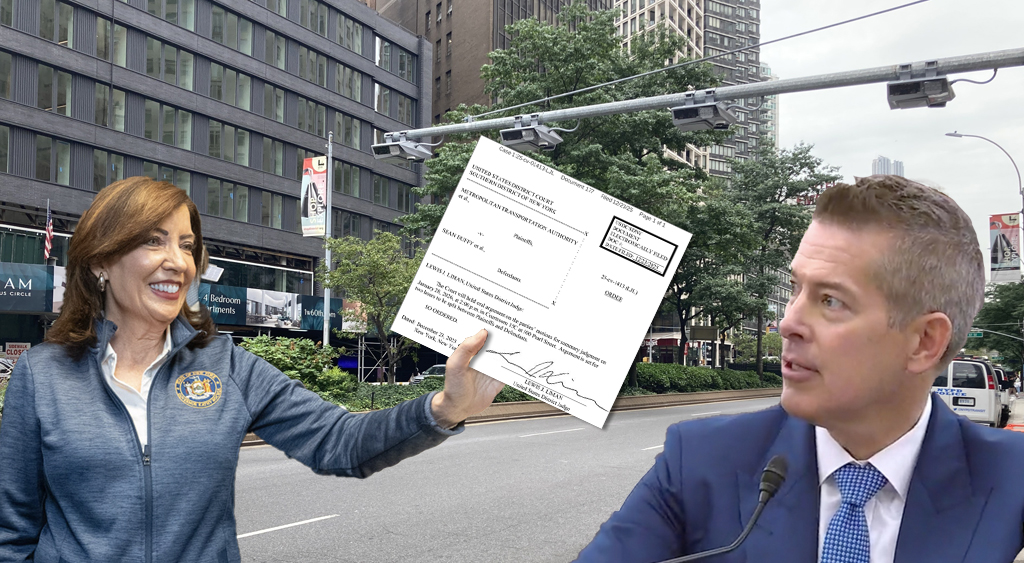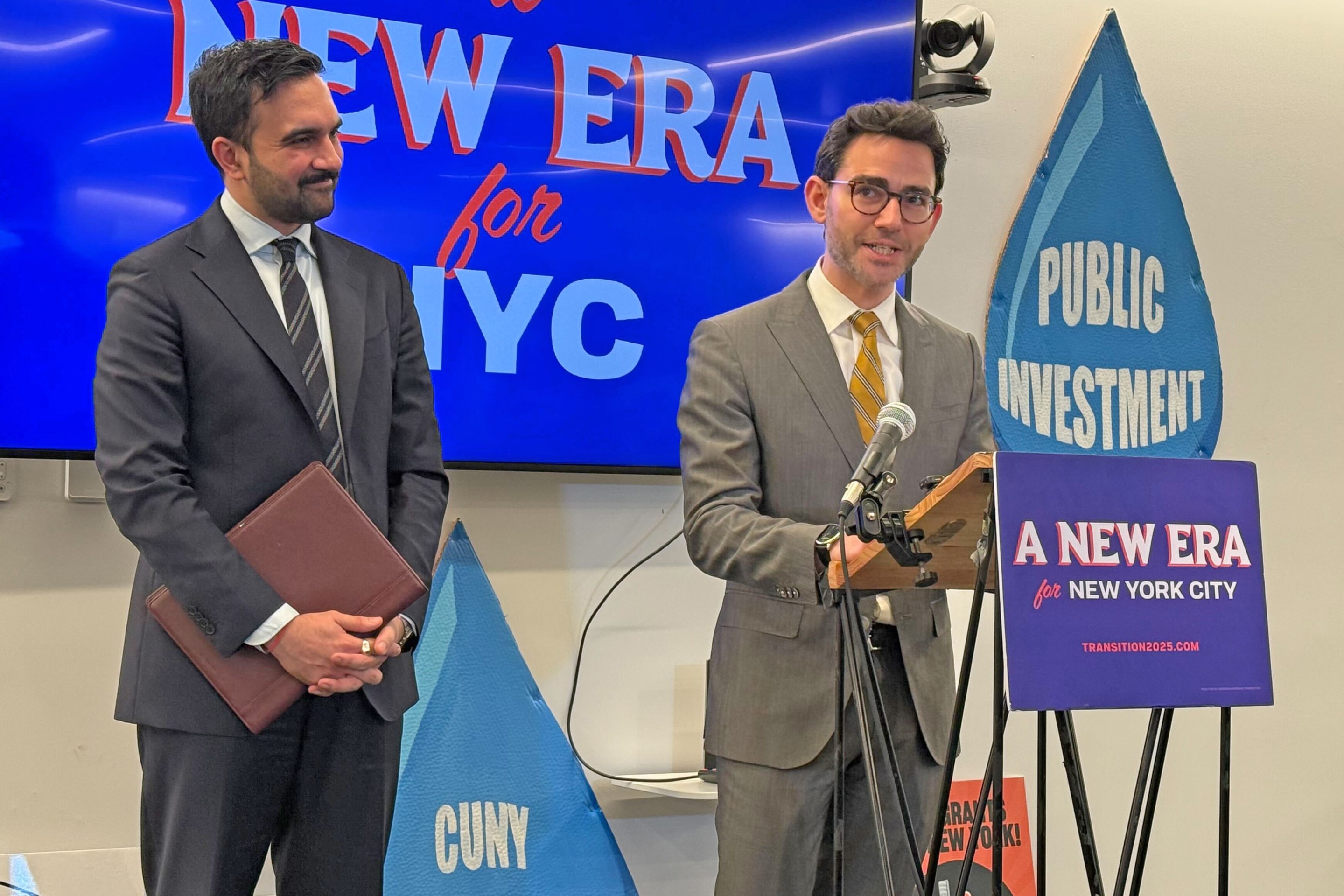We can't have more housing because there's so much illegal parking here!
A Southern Brooklyn community board has rejected a developer's bid to build more housing in Sheepshead Bay on the grounds that the area is too overrun by illegally parked cars — including those from the local precinct — that the citywide housing crisis will have to wait until there's more parking.
Brooklyn Community Board 15 rejected the proposed rezoning at 2510 Coney Island Ave., which would reclassify four and half lots for mixed use residential development — and that rejection came even after the developer modified the proposal to include less housing and more parking.
The board's rejection — plus a subsequent City Planning Commission hearing — centered on the all-too-familiar drama over residential parking, this time on one of the first projects since the city reduced off-street parking requirements for new development as a part of the City of Yes housing plan that passed last year.
“A few feet south of this location is the 61st Precinct [stationhouse] and as all of us know ... you could go there any time of the day and cars are double- and triple-parked around the entire perimeter,” explained CB15 Chair Theresa Scavo, defending her panel's rejection vote at the planning hearing. “Several hundred feet to the north of this location it is an automotive repair and collision shop. He has unilaterally taken over every parking spot and utilizes the median for autos there for repairs as well. … The community board is opposed to the rezoning [because] we believe if we allow this rezoning every property owner on that block will continue to do the same thing, causing more backups and more traffic.”
The proposal
Originally pitched as an 11-story building with 60 dwelling units and 24 parking spaces (left in photo below), the project was amended to reduce the height and the number of units while also adding underground parking so that each of the 35 units had a space. But CB15 still rejected the rezoning (community board votes are only advisory) and tensions continued to rise over parking in the area.
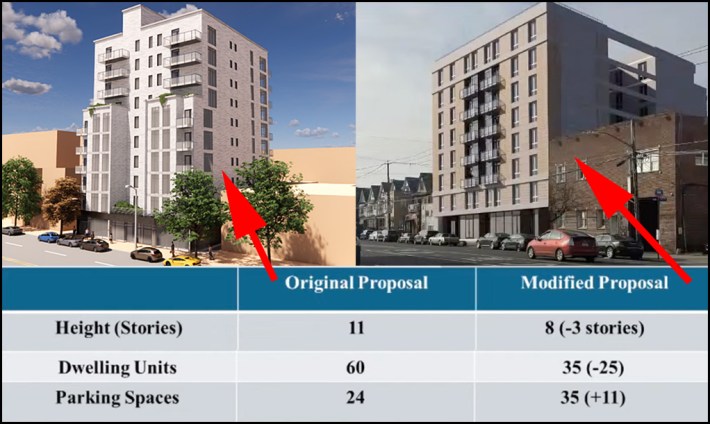
The one-to-one ratio of parking is far above the new mandatory minimum of just 3.75 parking spaces for a building of this size.
Borough President Antonio Reynoso took issue with the increase in parking.
“The proposed 35 parking spaces significantly increase project costs as they require a deeper cellar level with vehicle stackers and a full-time parking attendant," he wrote in his recommendation as part of the land-use review procedure. "The Department of City Planning estimates that each underground parking space adds $67,000 to construction costs and ... the applicant testified that excavating a deeper cellar level would add approximately $750,000 to the construction cost of this project in particular.”
The area has many transit options, the Neck Road Q train station and the Avenue U station on the F train are both a few short blocks away. And the B68 bus runs along Coney Island Avenue, with a connection to the B3 nearby.
Eyes on the street
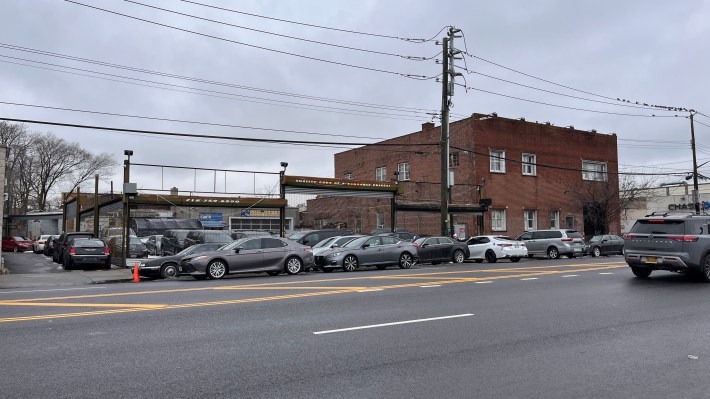
The rezoning site, on Coney Island Avenue between Avenue V and Gravesend Neck Road, is currently a used car dealership. Across the street, there is a large Yeshiva school for boys, a Brooklyn Public Library branch, and a gas station. On the other side of Gravesend Neck Road is the 61st Precinct stationhouse.
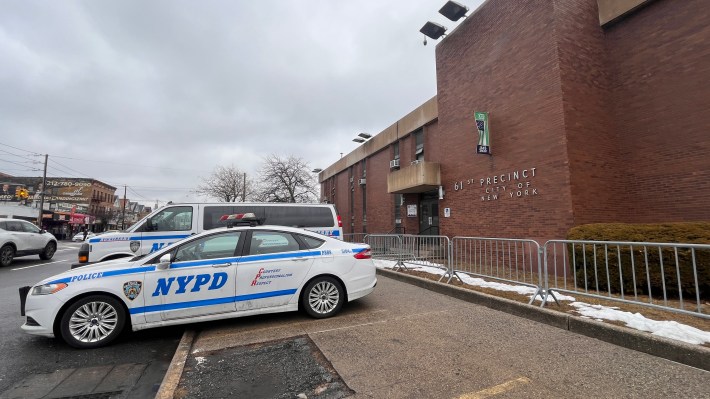
Most of the businesses within a few blocks of the site — including a Chase Bank, a McDonald's, and a Turkish restaurant — have their own parking lots. The precinct has two designated parking lots, but cops still leave personal and police vehicles on the sidewalk.
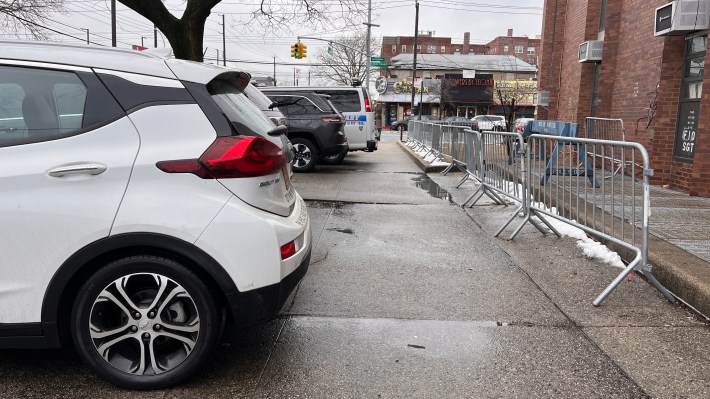
Gravesend Neck Road was completely blocked off on Thursday to serve as a private lot for police and officers' personal cars. But after Streetsblog asked NYPD why it had barred normal traffic on the roadway, officers removed the barricades and restored traffic (albeit no parking) to the corridor.
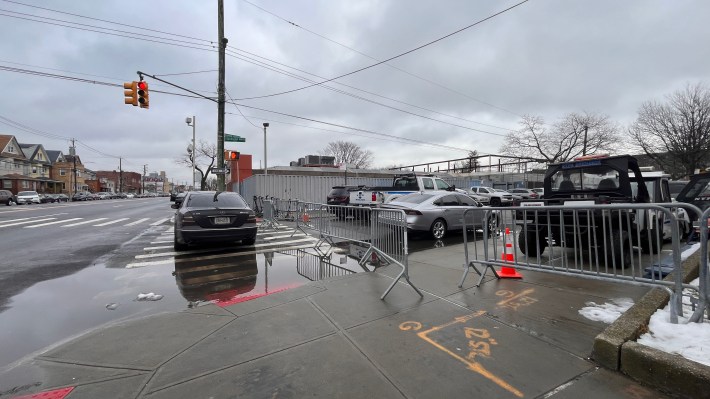
On the other side of Coney Island Avenue, cars are spilling out of the dealership, double-parked in the roadway, and on the sidewalk. More car dealerships and mechanic shops further down the Avenue means more cars pooling in the roadway and blocking the sidewalk.
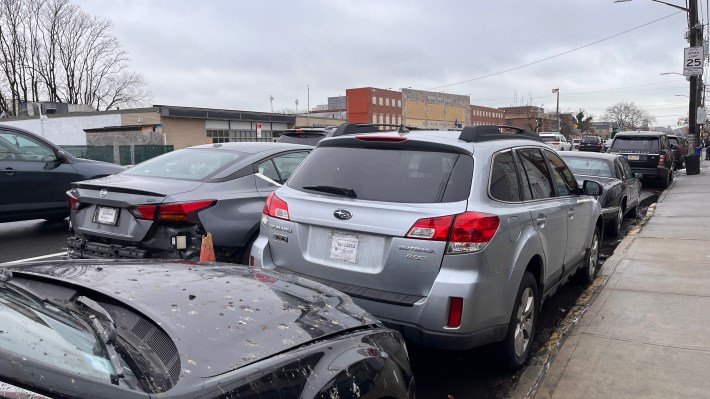
But turn off Coney Island Avenue and the neighborhood becomes much less centered around the automobile. There are many mixed-use two- to four-story buildings with small businesses. On Thursday, the streets were bustling with customers buying Valentine’s Day bouquets and shopping for groceries.
Parking around precinct houses is a problem citywide. Streetsblog has documented countless examples of New York’s Finest blocking sidewalks with their personal vehicles. Even the federal government got involved, threatening to sue the city if precincts don't stop blocking the sidewalks, making them inaccessible.
It is unclear why the NYPD allows this type of behavior to persist, or why so many officers choose to drive to work when they receive free use of MTA trains and buses.
“We’d love to see the NYPD analyze where officers live relative to where they work and if there are ways to reduce the amount of officers driving their personal cars to work because we see how much of a problem this creates in the neighborhoods that they’re working in,” said Sara Lind, the co-executive director of Open Plans, the livable streets non-profit (which shares a parent company with Streetsblog).
Self-fulfilling prophecy
The Planning Commission hearing spotlighted the confusion that commission members had over why the community board rejected — by a 33-to-3 margin — a proposal that responded to the community board's initial concerns about the number of units (too many) and the number of parking spaces (too few).
Scavo suggested that the area wasn’t made for housing, but Reynoso challenged the commission and the residents to think bigger.
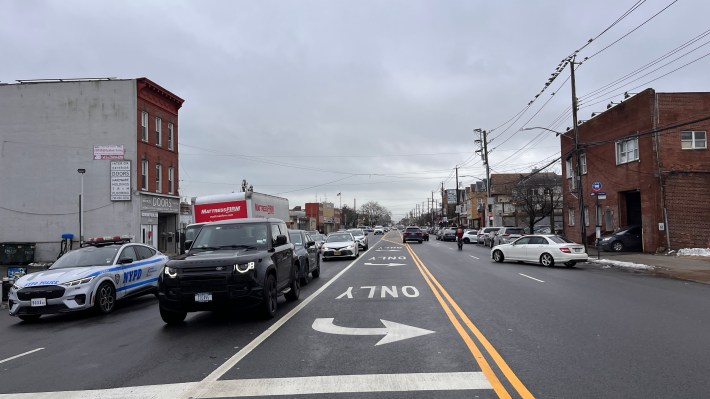
Noting "the perception that this area is not currently configured to accommodate the kind of transit-oriented development,” Reynoso's recommendation added, "The way to mitigate this perception is to plan for higher and mixed-use densities that will create opportunities for car-free trips and obviate the need for personal vehicle ownership. Requiring a one-to-one ratio of parking to dwelling units would instead create a self-fulfilling prophecy where neighborhoods are trapped in car dependent development patterns.”
But Council Member Inna Vernikov (R-Sheepshead Bay), sent a staff member to voice her opposition to the rezoning, signaling a “no” vote, which could easily kill the project due to “member deference.”
“Councilwoman Vernikov is strongly against this proposal,” said Troy Olsen, her legislative director. “There are considerable concerns in the community about this project, related to its height especially, but also parking and transit issues. … There are plenty of locations suitable across Brooklyn for more housing but not here.”
Asked by Planning Commission Chairman Dan Garodnick to come up with another location where Vernikov would support more housing, Olsen said he could not — and conceded that parking was the most important thing to the Council member.
“The top issue on a day-in day-out basis is really parking,” said Olsen. “We have to fight to protect every parking spot and get more parking spots.”
But the project adds parking, pointed out Commissioner Gail Benjamin.
“If they had to have a choice [the community board would] rather have the current parking situation with cars parked on the median and cars parked on the sidewalk, then a new building, is that correct?” Benjamin asked Olsen.
Advocates say the discussion demonstrates many locals' inability to think beyond the perspective of a driver — even in a district where only 35 percent of residents drive to work and 62 percent own cars, according to census data.
"Too many community board members only see the windshield perspective and don't understand how many New Yorkers don’t have cars, don’t want to have cars, and are excited to live in walkable neighborhoods," said Lind. "This is a self-perpetuating cycle: you build more parking and more people drive in your neighborhood and therefore street parking is more difficult. This project as changed by the CB would just contribute to that cycle. Parking is at the root of so many issues that the city is facing."
The planning commission is set to vote on the project in the coming weeks. After that, the plan will then be voted on by the Council, where it will likely be rejected, given Vernikov's position.
